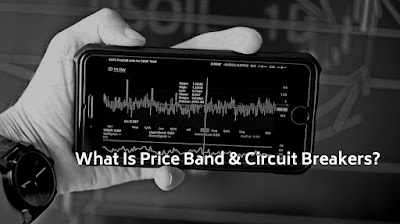Sometimes, stocks act abnormally and spiral out in one direction.
And if these types of activities are not curbed, then prices of many stocks
could be manipulated to such an extent that investors would lose lakhs of rupees
per day. And hence to stop that unusual ultra-high volatility, the exchanges in
India have defined price bands and circuit breakers.
The main motive behind defining these two limits was to stop panic
selling and halt the trading day at some specific limit per day. So, let's see
how and what are the price bands and circuit breakers in Indian exchanges.
What is a Price band?
The main application of the price band is to halt trading after a
point and stop volatility to reach sky-high. Historically, there have been a
couple of trading days when unexpected bad news has spread a huge amount of
negativity in the market. And this news has resulted in investors pulling out
all their money from stocks. Now just imagine what would happen when everyone
in the world panics and sells their holding? Stocks would plummet down and due
to panic selling, huge number of money would get lost. And most importantly,
the exchanges would crash as they won't be able to handle these many orders.
And hence, for each day, exchanges set a price band around a scrip which
defines the maximum and minimum limit to move for each stock on that particular
day. Suppose the price band is 10% for a scrip "A" which is trading
at 100/share. Then on that day, the max price that A can trade is between
90-110. Whenever a stock hits either of the boundaries, trading stops. Hitting
the lower boundary is called, the lower circuit, while hitting the above
boundary is called the upper circuit.
How Much Capital Do You Require To Trade In The Stock Market?
How are price bands calculated?
Exchanges in India have made a few rules which define the various
stock price bands. Below we have mentioned a few of the price bands that are
there in India:-
·
A price band of 2% either way
·
A price band of 5% either way
·
A price band of 10% either way
·
A price band of 20% either way
Now there are many rules which make which stocks would have the 2%
rule and which would have the 10% and 20%. Those rules are based on the market
cap and type of index they are from or whether or not they are a part of stocks
that have derivates in the exchange.
What is a circuit breaker?
Ultra-high volatility is not just there in stocks but in indexes
too. Whenever this type of volatility happens in the main index of the
exchange, it is defined as a circuit breaker and trading is halted all over the
exchange. For example, during the covid crash, nifty tanked down to -10% in the
opening minutes. What happened at that moment? Trading was halted for a
particular period to stop panic selling. But it didn't stop there. When trading
resumed, it went further down to -15% in a couple of hours. Trading again
stopped. But thankfully, nifty never saw a 20% down move last year. But a 20%
down move for an index is the last point of the day. Reaching there would mean
trading would stop for the whole day across all the exchanges and all the
stocks.






.jpg)
0 Comments